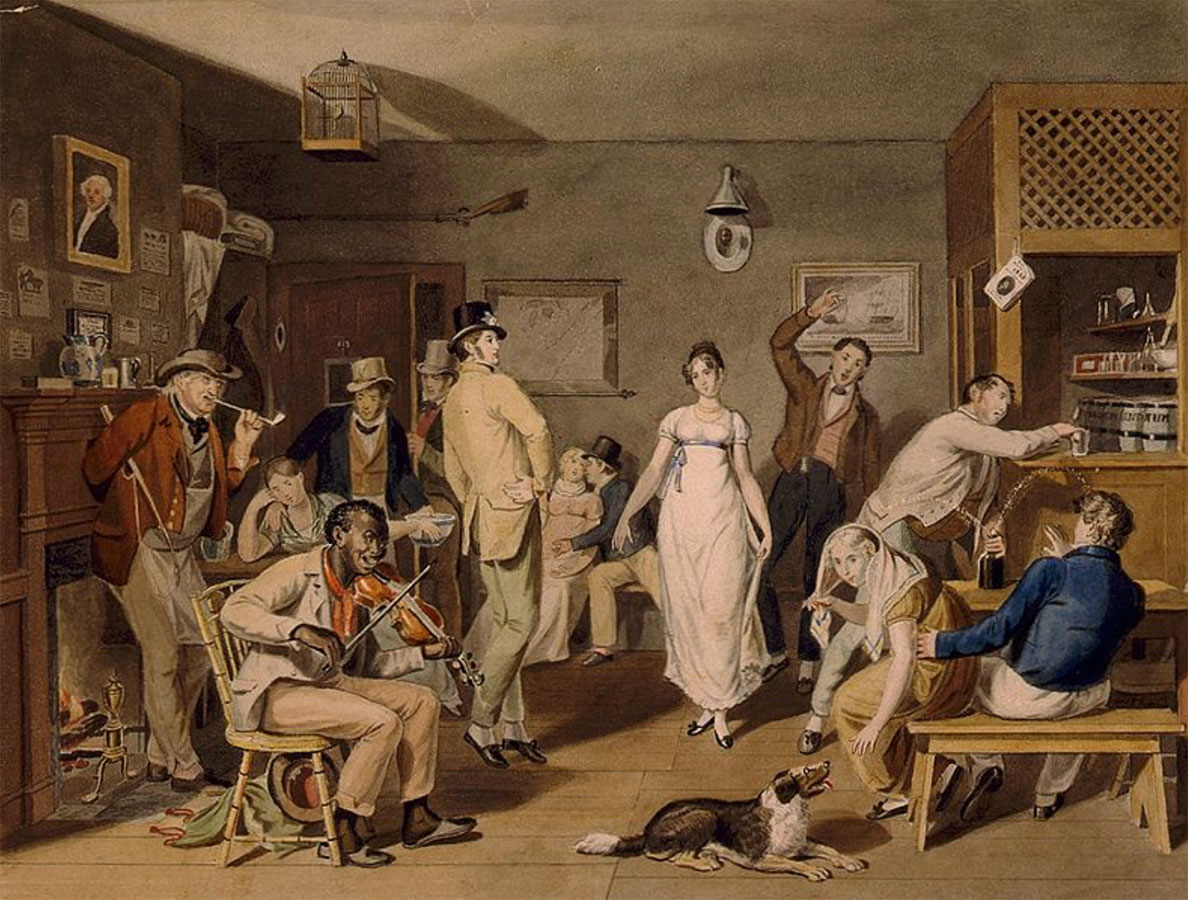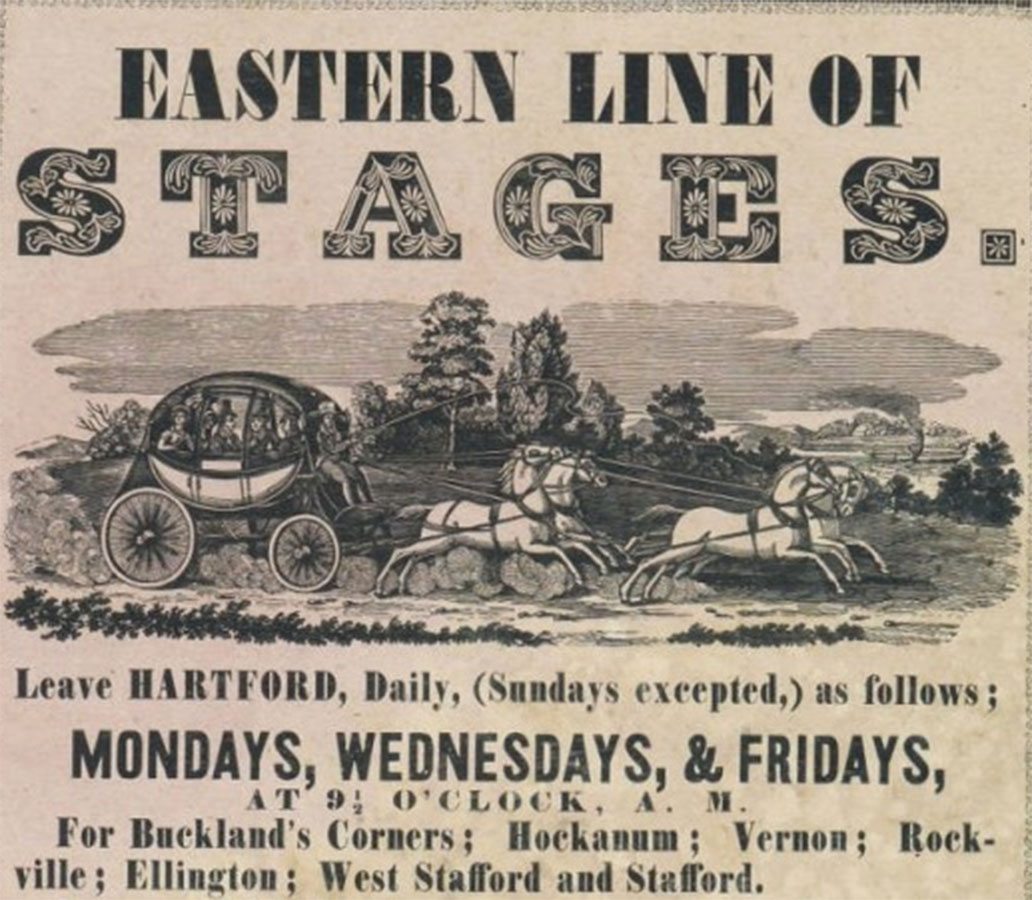About the Tavern
Who went to taverns?
Travelers
People traveling from one town to another had to be able to stop along the way for something to eat and drink, and to find a place to spend the night. Taverns were located in seaports, where ferries crossed rivers, and along main roads. Taverns along the road were usually spaced about ten miles apart.
Local Farmers and Other Workmen
Men who worked near a tavern would gather there for food and drink, to visit with friends, and to catch up on the news. Men enjoyed playing games such as checkers, chess, and darts. People often discussed politics or other important events; sometimes there were arguments. The local post office was often located at the tavern, so people would stop there for their mail and to hear the latest gossip.
Concord Militia. Courtesy of the Avery-Copp House Museum, Groton, CT.
Church-Goers
Church was an all-day affair in New England, well into the nineteenth century. If families had traveled from the countryside to get to church, they would stay in town during the break between morning and afternoon services. The tavern provided a place to warm up (churches were usually not heated) and to enjoy a mid-day meal.
Social Gatherings
Some taverns were large enough to have a ballroom on the second or third floor; social events with music and dancing would take place there. Traveling entertainers, such as actors and magicians, would stop at taverns to put on shows. Dancing teachers might arrange to hold lessons there, attracting young people from the town and the surrounding countryside. In the winter, sleighing parties would stop at the tavern to have a hot drink and warm themselves by the fire.
Courtesy of the Avery-Copp House Museum, Groton, CT.
Animals
If a traveler arrived on horseback, or in a cart pulled by horses or oxen, these animals would also need food, water, and a place to sleep. It was important for taverns to have stables that could provide for the needs of the animals.
A Closer Look at the Painting
What types of visitors do you see at this tavern? Why do you think they are here? What animals are visiting the tavern? Are all the animals visiting, or do they live here?
How did people get to taverns?
People arrived at taverns in a variety of ways, depending a great deal on the tavern location. Taverns in seaport towns were visited by travelers who had arrived on ships from other ports, maybe even from other countries. Taverns were also visited by people who had come to town from the countryside, either to buy products that arrived on the ships or to sell farm produce to customers in the city. Some taverns catered to the sailors who worked on ships; these were usually rowdy placed not frequented by other travelers. Taverns along main roads were visited by people traveling on foot, on horseback, in a wagon or a carriage. When roads were frozen in winter, traveling by horse-drawn sleigh was a popular way to go. Some taverns were located beside rivers and canals. Regular stage coach service existed on the main roads between larger towns. Some taverns were known as “stage stops”, where the stage coach driver could exchange his tired horses for fresh ones and the passengers could stretch their legs and get something to eat. These taverns also served as the local post office, and would be a place for people to gather in order to hear news from other areas, or perhaps to get a newspaper from another town that had been brought in by a stage coach passenger.
A Closer Look at the Painting
What methods of transportation do you see? Would people use these same methods in another season? What changes would you expect to see if there was no snow on the ground? What methods of transportation can you imagine that are not shown in the painting?
What did tavern signs "say" to people?
Tavern owners used colorful signs to advertise their business to passers-by. The images on the signs served several purposes. The sign might be promoting the good food and drink to be found within, or might be suggesting the pleasant entertainment or comfortable bed that travelers could hope to find. Horses were often pictured on signs, to indicate that they would be well taken care of.
Some signs give a clue about the customers who might be attracted to a certain tavern, or about the political beliefs of the tavern keeper. This would help people decide if they wanted to go into a certain tavern – or not!
Tavern Sign. Courtesy of the Avery-Copp House Museum, Groton, CT.
A Closer Look at the Painting
There is a sign in front of the tavern, but it is not possible to read the name or to see a picture on it. What name would you choose for this tavern? What art work would you use to promote it?





Have a question or comment regarding SEE/change? Enter your email and comment here.
"*" indicates required fields